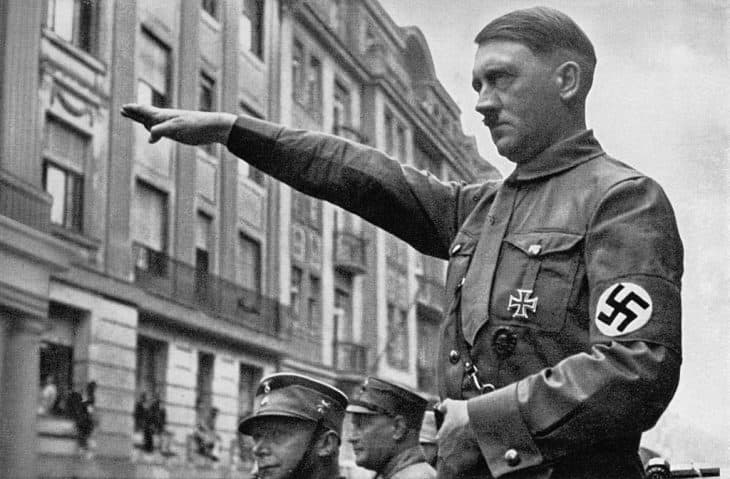
Adolf Hitler is one of the most infamous individuals in world history. This Austrian-born German politician’s actions had a significant impact on the world — but it was not a positive one. The world remembers him as a symbol of cruelty and wickedness, especially because of his role as a Nazi dictator of Germany, as well as his key roles in World War II and the gruesome Holocaust. Learn more about this cruel leader’s life with these intriguing Adolf Hitler facts.
- Adolf Hitler was born on April 20, 1889, in Braunau am Inn, a town in Austria (then Austria-Hungary).
- Hitler was the fourth of six children. Three of his siblings died in infancy.
- Adolf Hitler was 5′ 9″ (1.75 m) tall and had brown hair and blue eyes.
- There have been around 42 recorded assassination plots against him.
- His parents were second cousins.
- Hitler started World War II in Europe by launching an invasion of Poland. By starting the historical war, Adolf Hitler is responsible for the death of around 75 million people.
- He designed the banner of the Nazi Party, which depicts a swastika over a white circle in a red background.
- Although Adolf Hitler did not receive any diagnosis of mental illness in his lifetime, some historians speculate that he likely suffered from them.
- Hitler believed that the Aryans were superior to all other races. He believed that Aryans have pale skin, blond hair, and blue eyes.
- Both of Adolf Hitler’s parents were Catholic, but his father didn’t believe in religious authority.
- In his autobiographical manifesto, Mein Kampf, he expressed his hatred towards Judaism and Communism.
- Hitler hated Christianity, calling it a religion fit for slaves. However, he also criticized atheism.
- He banned youth organizations such as Boy Scouts and forced young, non-Jewish males to join the Hitler Youth organization.
- Hitler hated the word “Blitzkrieg”, referring to a known German military tactic.
- Hitler reportedly suffered from gastrointestinal problems that caused frequent, uncontrollable flatulence.
- Hitler reportedly had an irrational fear of cats.
- Despite popular belief that Hitler’s father was Jewish, there’s no evidence to back this claim. However, DNA tests on his relatives showed that he likely had African and Jewish ancestors.
- When Adolf Hitler was eight years old, he considered becoming a priest.
- In 1940, Charlie Chaplin made a mocking film, The Great Dictator, about Adolf Hitler. Chaplin funded it out of his own money.
- The cover art of Captain America Comics #1 features Captain America punching Adolf Hitler. This was published in 1941, a full year before the United States entered World War II.
His father’s last name was originally “Schicklgruber”.
Adolf Hitler’s father, Alois Hitler Sr., was the illegitimate son of Maria Anna Schicklgruber. Maria was unmarried at the time of Alois’s birth, and so his name was originally Alois Schicklgruber. Johann Georg Hiedler, who some speculate was Alois’s biological father, married Maria in 1842. Alois was made legitimate in 1876, and a priest annotated the baptismal certificate of Alois and registered Johann Georg Hiedler as his father. Other civil authorities soon followed suit, and Alois then adopted the last name, Hitler — although the legal documents spelled Hiedler as Hitler. It is uncertain why the spelling change occurred.
Adolf Hitler and his father often weren’t on good terms.
Although Adolf reportedly had a close relationship with his mother, Klara, he wasn’t always on the best of terms with his father. Alois Hitler was 51 when Adolf was born, and he showed little interest in raising children. He left most of the care to his wife, and he reportedly beat her and their children. Adolf reportedly disliked and feared his father, and the two would often fight.
Alois Hitler wanted Adolf to take up a career in civil service, but Adolf greatly disliked the idea. Adolf adamantly refused his father’s wishes. Alois died when Adolf Hitler was just 14 years old.
Hitler displayed German nationalist ideas at a young age.
Despite being Austrian, Adolf Hitler developed a strong affinity to German nationalist ideas at an early age. He was loyal to Germany and followed many of the nation’s customs. Along with his friends, he used the greeting “Heil”. Furthermore, instead of singing the national anthem of Austria, he sang Germany’s national anthem.
A priest saved him from drowning in a river as a child.
When Adolf Hitler was just four years old, he fell into the River Inn in Passau, southern Germany. He reportedly was playing with his friends when he fell into the freezing cold water. Johann Kuehberger, a priest, then jumped into the icy water to rescue the young boy. Although Hitler himself never confirmed the event, a German newspaper from 1894 provided evidence for this unusual story. Now that’s certainly among the most interesting Adolf Hitler facts.
He wanted to be an artist.
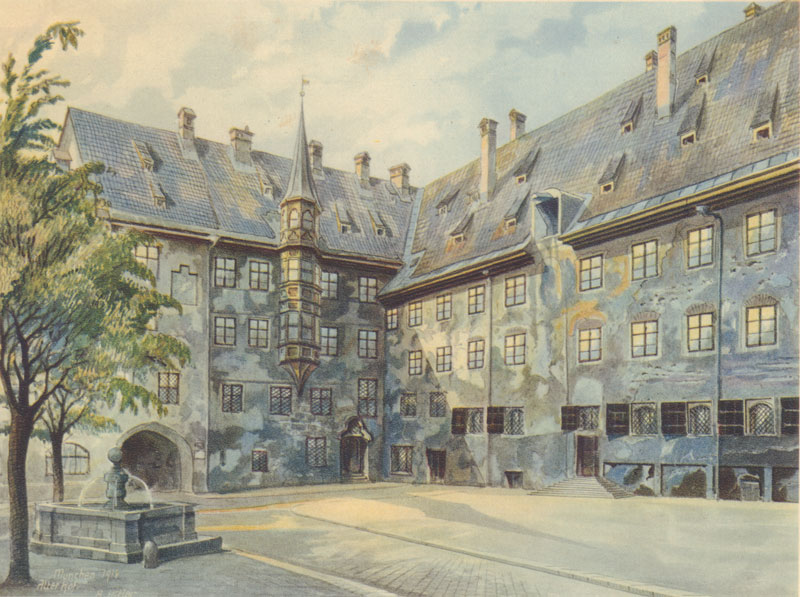
It’s a well-known fact that Hitler used to pursue the arts. In 1907, he left his home in Linz, Austria to apply for an art degree. He sent applications twice to the Academy of Fine Arts Vienna, but they rejected him both times. The director stated that he should instead send applications to the School of Architecture, but Hitler lacked the credentials because he never finished secondary school.
Hitler’s mother gave financial support to fund his pursuit of the arts, and when she died in December of 1907, he ran out of a source of funding. He eventually ran out of money and stayed in homeless shelters during his time in Vienna. To earn some money, he worked as a casual laborer and also sold paintings of Vienna’s various sights.
In 2002, a modern art critic reviewed Hitler’s paintings without knowing who painted them. The critic stated that the paintings were good, but the style in which he painted the human figures showed that he had little interest in people.
He was a stateless individual for seven years.
One of the more obscure Adolf Hitler facts is that in 1925, Hitler renounced his Austrian citizenship and became a stateless individual. He faced the risk of deportation and legally could not run for public office. Hitler remained stateless for seven years until he acquired his German citizenship in 1932. He gained this citizenship when Dietrich Klagges, a member of the Nazi Party, appointed him as a low-rank government official in the City of Brunswick, Germany.
Hitler served in the military during World War I.
In 1913, Adolf Hitler moved to Munich, Germany. He reportedly did not want to serve under Austria-Hungary because of the mixture of races in their army, and this prompted him to leave Vienna. Although he was an Austrian citizen at the time, Hitler served in the Bavarian army under Belgium and France upon his request.
In the First Battle of Ypres in October 1914, he served as an infantryman in the 1st Company. Their regiment entered the battle with 3,600 but they ended up with only 611 men at the end of the battle. John Keegan, Hitler’s biographer, stated that this experience made Hitler quite a withdrawn individual for the rest of the war.
After the Battle of Ypres, Hitler was promoted to lance corporal and became a regimental message-runner. This was a relatively safe job and had their bases far enough from the front. However, in October 1918, Adolf Hitler suffered from temporary blindness and briefly lost his voice because of a British mustard gas attack. He also stated that he suffered a second bout of blindness after learning that Germany lost.
Hitler’s experiences in World War I greatly influenced his ideologies. Along with many Germans, he viewed the Treaty of Versailles as unjustly humiliating. Hitler would later use this treaty along with Germany’s political and socioeconomic conditions for political gain.
He used to sport a full mustache.

One of Adolf Hitler’s most defining features is his iconic toothbrush-style mustache. Before adopting this style, however, he sported a full Kaiser mustache. Hitler changed his mustache style during World War I to better facilitate the wearing of a gas mask, according to Alexander Moritz Frey, who served with Hitler during that period. During the interwar period, the toothbrush style was popular but eventually dwindled in popularity after World War II because of its association with Hitler. How’s that for some interesting Adolf Hitler facts?
Hitler entered politics after World War I.
Adolf Hitler returned to Munich after World War I, where he remained in the army because he didn’t have any career options and didn’t finish secondary school. Hitler’s superiors encouraged him to join the German Workers’ Party (Deutsche Arbeiterpartei; DAP), and in 1919, the party accepted him as party member 555. He was actually just the 55th member, and they started counting after 500 to give the impression that the party was larger than it actually was. Many regard his acceptance in the party as the start of his rise to power.
The DAP later evolved into the Nazi Party, and Hitler began working full time for the party after his discharge from the military in 1920. Hitler was quite skilled with crowd manipulation and became famous for his passionate speeches against Marxists and the Jews. With this, he sparked a dangerous form of nationalism within large groups of people, and many others joined the Nazi Party. He became the leader of the Nazi Party in 1921.
He went to prison for five years after a failed coup d’etat.
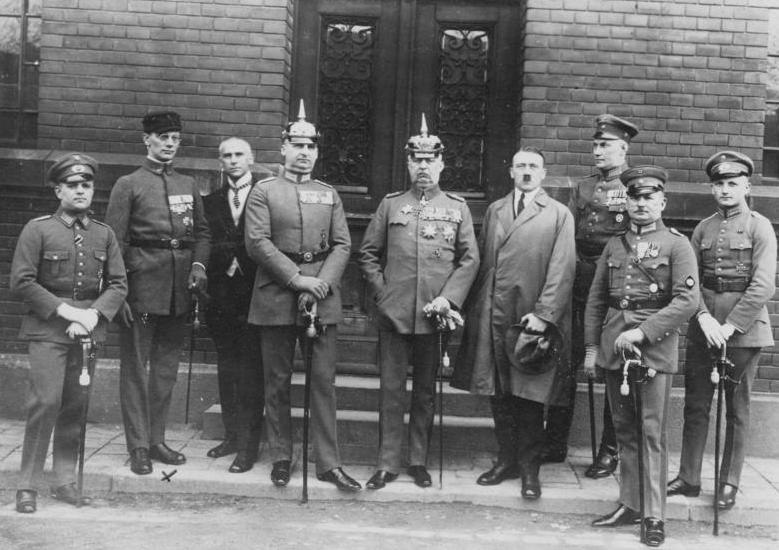
Hitler and his followers attempted to take over the government of Bavaria in southern Germany by staging a coup d’etat which they called the Beer Hall Putsch. This attempted coup d’etat, however, failed and resulted in the deaths of four cops and 16 members of the Nazi Party. It also ended with Adolf Hitler’s arrest. Hitler spent five years in prison for treason. During this time, he wrote the first volume of his autobiographical political manifesto, Mein Kampf (My Struggle).
Hitler became a national figure following the Beer Hall Putsch and his trial. After his time in prison, he sought to gain power through rebuilding the Nazi Party and using the democratic process. With this, he further developed Nazi propaganda.
In the 1932 German presidential elections, Hitler ran against Paul von Hindenburg but ended up losing. However, Hitler still garnered 32 percent of the votes and became a powerful force in German politics. Because of a lack of an effective government, Hindenburg reluctantly appointed Hitler as chancellor in 1933, and the Nazi Party gained three posts in the cabinet.
Hitler used the Reichstag fire to take away civil rights.
On February 27, 1933, the Reichstag (the house of the German parliament) was set on fire and the blame was put on a communist plot. Some say that this was the doing of Dutch communist Marinus van der Lubbe, while others state that the Nazis were responsible for the fire. Following this attack, Hitler urged President Hindenburg to suspend basic civil rights and detain people without trial. This suppressed a significant portion of the Nazi Party’s political opponents. As the Nazi Party grew stronger in the government, they used provisions in the Reichstag Fire Decree and the Enabling Act to transform the government into a dictatorship.
Under the dictatorship, the government intimidated other parties into disbanding, and the Nazi Party became the only legal party in Germany. After Hindenburg died in 1934, the Nazi Party abolished the president’s office and merged it with the chancellor’s functions. This made Hitler the Führer und Reichskanzler (leader and chancellor), the head of state and head of government. With this, it became impossible to remove Hitler from his office. Hitler also eventually took control over the military by blackmailing high-ranking officials, although he was careful to make his dictatorship appear legal and constitutional.
He never visited a concentration camp.
During Hitler’s regime as the Chancellor of Germany, the Nazi Party established more than a thousand concentration camps and extermination camps, such as that in Auschwitz. These concentration camps initially held members of the Communist Party, then they eventually held more groups of people such as Jews, criminals, and “asocials”. At one point, the concentration camps held around 1.65 million registered prisoners. Around a million people died in these camps, and hundreds of thousands also died during the death marches towards the end of World War II.
Extermination camps were much worse, as these camps only served as killing grounds for millions of people, mostly Jews. These extermination camps were central to the gruesome Holocaust, and the Nazis systematically murdered millions of people through gassing and starvation in these camps. The cruel dictator Adolf Hitler never personally visited any of these concentration or extermination camps.
He had a plan to build a “Museum to an Extinct Race”.
During his regime, Hitler and the Nazis blamed most of Germany’s problems on the Jews and viewed the Aryan race as superior to other races. As a result, they wanted to exterminate the Jews and other races. Among the more obscure Adolf Hitler facts is that he had plans to build a “Museum to an Extinct Race”, which would showcase artifacts of the race they tried to exterminate. The Nazis consequently plundered gold, silver, currency, paintings, and various cultural items to put in the museum. Agents of the Monuments, Fine Arts, and Archives program (MFAA) have recovered a significant portion of the items, but many of them are still missing.
One British plan to assassinate Hitler didn’t go through.
In 1944, the British Special Operations Executive (SOE) conceived a plan to assassinate Adolf Hitler, and they named it Operation Foxley. The plan was to use a sniper to take Hitler out during his morning walk. However, the plan didn’t push through because the British authorities deemed Hitler had poor war strategies and whoever was next in line might pose more of a challenge to them. They also considered the possibility that the Germans would see Hitler as a martyr who would have won if it weren’t for the underhand methods of the British. That outcome would lead the Germans to retaliate in the future. Instead, they focused on winning the war against Germany and destroying the Nazi ideology.
The Allies plotted to put estrogen in his food to make him more feminine.
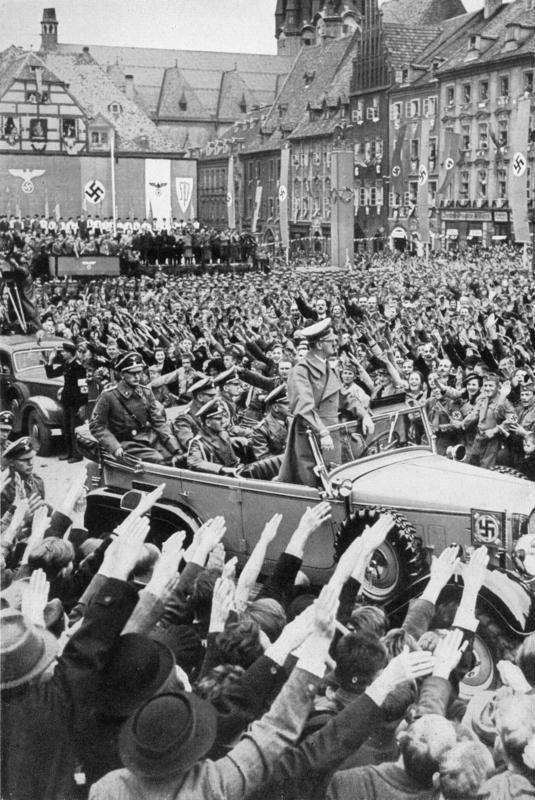
If you’re looking for bizarre Adolf Hitler facts, then look no further. British spies once plotted to place female sex hormones (estrogen) in his food to supposedly bring out his more feminine side and calm him down. The plan was to keep Hitler less aggressive and subdue his plans for world domination. Like Operation Foxley, however, the estrogen plot didn’t push through.
Adolf Hitler had one undescended testicle.
A list of Adolf Hitler facts would not be complete without confirming the bizarre fact that Hitler had one undescended testicle. Researchers analyzed Hitler’s old medical records and found out that the dictator suffered from cryptorchidism, a condition wherein the testicle/s fail to descend from the abdomen into the scrotum. In Hitler’s case, his right testicle didn’t descend, giving an appearance of just having one testicle.
Hitler was a chronic tax evader.
One of the most intriguing Adolf Hitler facts is that he was a notorious tax evader. During his regime, Hitler accumulated millions through his hefty salaries as Chancellor and President, royalties from Mein Kampf, and evading taxes. He refused to pay his taxes throughout his rise to power, and in 1984, the Munich tax office fined him 405,494 Reichsmarks because of his tax evasion and failure to declare his income. Hitler once again evaded this by moving himself to be free of taxes.
To avoid food poisoning, he employed young women to taste his food.
When Hitler became more fearful that the British would poison his food, he hired a group of 15 young women to taste his food before he ate it himself. This fact remained unknown until 2013, when 95-year-old Margot Woelk, one of Hitler’s former food tasters, told a Berlin reporter about her story. Woelk noted that the food in Germany during that time was scarce, and while the food she tasted was good, she and the other food tasters constantly feared for their lives because of the threat of poisoning.
He had an obsession with his half-niece.
Another one of the bizarre Adolf Hitler facts is that he had an obsession with his half-niece, Angela Maria “Geli” Raubal. Geli Raubal was the daughter of Adolf Hitler’s half-sister, Angela Hitler. During Hitler’s rise to power, he became increasingly possessive of Raubal. He kept close watch of her actions and effectively lived as Hitler’s prisoner in his Munich apartment.
Geli Raubal had a relationship with Hitler’s chauffeur, Emil Maurice. Upon learning this, Hitler forced them to end the relationship and then fired Maurice. Hitler also forbade her from associating freely with her friends. After he didn’t allow her to go to Vienna, they had an argument, and Raubal was later found dead in Hitler’s apartment. She apparently took her own life in 1931 using Hitler’s pistol, but some speculated that Hitler murdered her. The police reported no signs of foul play, however.
His half-nephew fought for the US Navy.
William Patrick Hitler was Adolf Hitler’s half-nephew, the son of his half-brother Alois Hitler Jr. He was a British citizen by birth, but he went to Germany in 1933 in an attempt to benefit from his uncle’s rising power. His uncle Adolf Hitler got him several jobs, but he grew dissatisfied with them. Wanting better jobs, he tried to blackmail Hitler by threatening to share his embarrassing family stories to the press.
Adolf Hitler offered William a high-ranking job in 1938, but in exchange, William should renounce his British citizenship. William then feared that this might be a trap, so he fled Nazi Germany and returned to London. He then immigrated to the United States, where he joined the United States Navy and fought against his uncle’s forces in World War II. William Patrick Hitler received a Purple Heart award, US citizenship, and later changed his last name to Stuart-Houston.
His family’s physician, Eduard Bloch, was Jewish.
One of the Adolf Hitler facts you have to know is that the family physician of the Hitlers was Jewish. Eduard Bloch was an Austrian Jew, and he administered medical care to Adolf Hitler and his family. He notably took care of Hitler’s mother, Klara, when she was ill with breast cancer. Because he knew the family’s socioeconomic situation, Dr. Bloch would sometimes give discounts or even waive the medical fees completely. This earned Dr. Bloch special protection after the Nazi annexation of Austria, and Hitler even referred to him as an “Edeljude” or “noble Jew”.
He was asleep during the Normandy invasion.

During the Allied invasion of Normandy on D-Day, Hitler was asleep. His subordinates did not want to send reinforcements without Hitler’s command, but they also did not want to wake him up. Hitler woke up at around 11 a.m. or noon, and it took a while for him to send reinforcements to Normandy because he was confident that it was just a diversion tactic. This significantly weakened the German defense against the Allied forces.
Hitler was Time’s “Man of the Year” in 1938.
One of the most controversial Adolf Hitler facts is that he was Time magazine’s “Man of the Year” (now “Person of the Year”) in 1938. They explained that the title was not an honor or praise but instead a distinction that features a person, group, idea, or object that influenced the world “for better or for worse”. Time magazine also featured other controversial figures as “Person of the Year”, such as Joseph Stalin (1939 and 1942), Nikita Khrushchev (1957), and Ayatollah Khomeini (1979).
A Swedish legislator nominated Adolf Hitler for a Nobel Peace Prize as a joke.
In 1939, a Swedish legislator nominated Adolf Hitler for a Nobel Peace Prize. He intended for this to be a joke, but the nomination stirred up significant outrage, causing the withdrawal of the nomination. A famous critic of Hitler, on the other hand, earned a Nobel Peace Prize in 1935. Hitler was furious at this and banned every German from receiving a Nobel Prize. As an alternative, they established the German National Prize for Art and Science. Certainly among the most intriguing Adolf Hitler facts.
Adolf Hitler was vegetarian.
Hitler wasn’t always vegetarian, but he adopted a vegetarian lifestyle sometime in the 1930s. He had a reputation for being vegetarian by 1938, and he confirmed this in 1942. He also tried to dissuade others from eating meat by telling them vivid stories of animal slaughter and suffering. Ironic, isn’t it?
He didn’t smoke tobacco and only drank beer occasionally — but he did consume a lot of drugs.
Aside from having a vegetarian diet, Adolf Hitler also did not smoke tobacco for most of his adult life. When he was younger, however, he smoked quite heavily at around 25 to 40 cigarettes a day. He even offered to give a gold watch to his close associates if they quit smoking. Hitler also gave up drinking alcohol when he switched to a vegetarian lifestyle, only drinking beer on occasion.
Despite Hitler’s healthy habits, however, he consumed drugs regularly during the war years. He took various kinds of psychoactive drugs such as cocaine, opiates, barbiturates, and amphetamine.
His personal physician prescribed 90 medications to him.
Numerous researchers have looked into Adolf Hitler’s health records and some have suggested that Hitler suffered from a variety of illnesses such as irritable bowel syndrome, tinnitus, syphilis, coronary sclerosis, and Parkinson’s disease. Although many researchers also suggested that Hitler had some mental illnesses, they also stated that he was always aware of his decisions. Theodor Morell, Hitler’s physician, prescribed around 90 medications during the war years for his different ailments.
Hitler’s dog, Blondi, died because Hitler ordered a doctor to test the effectiveness of cyanide pills.
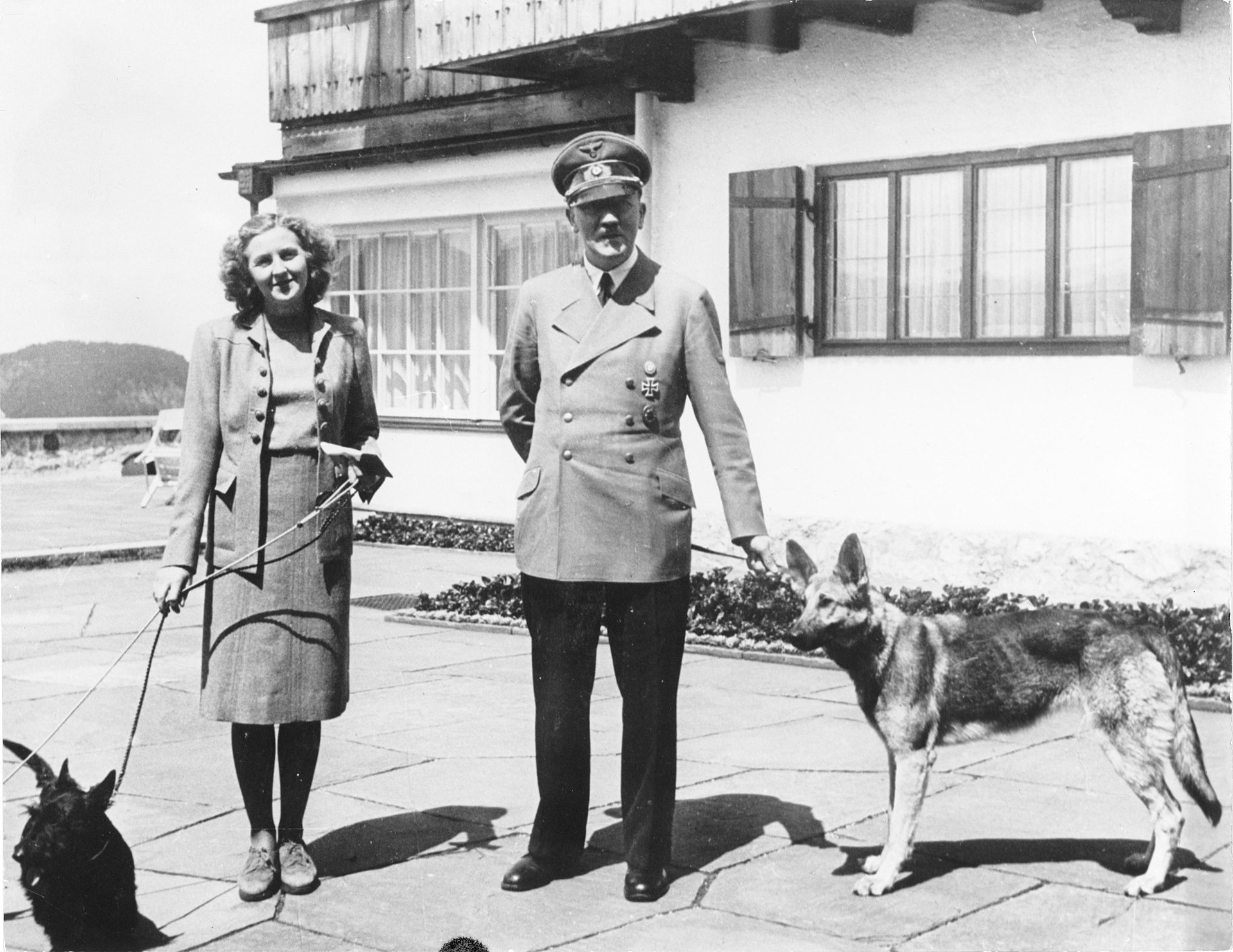
Adolf Hitler had a favorite dog — a German shepherd named Blondi. He got Blondi as a puppy as a gift from another Nazi official in 1941. Hitler was very fond of her and would often let her sleep in his bed in the bunker. However, he used Blondi in the Nazi propaganda by portraying himself as an animal lover. This earned him a more positive reception from the public.
When the Allies were winning the war and were closing in on Hitler, he received cyanide capsules from Heinrich Himmler’s Schutzstaffel (SS) to evade capture. Hitler also planned to put down Blondi because he did not want the Russians to capture her as well. A day before Hitler’s death, he wanted to check the potency of the cyanide capsules by having Dr. Werner Haase give the capsules to Blondi. The dog died as a result.
He married Eva Braun a day before they died.
Eva Braun and Adolf Hitler engaged in a relationship by the end of 1932, about a year after the death of Hitler’s half-niece Geli Raubal. Braun herself attempted to end her own life twice early in her relationship with Hitler. She was a photographer who took many of Hitler’s surviving films and photographs, and she was a key figure in Hitler’s social circle. Hitler married Braun within his Berlin bunker on April 29, 1945, just a day before their deaths.
Hitler took his own life at age 56.
Towards the end of World War II, the Red Army and the Western Allies both closed in on Germany. On April 30, 1945, the Soviet army was only a block or two away from Hitler’s bunker in Berlin. Fearing capture, Adolf Hitler and his wife Eva Braun took their own lives. Hitler died by a gunshot to the head, while Braun took a cyanide pill. Hitler was only 56 when he died, while Braun was 33.
Was this page helpful?
Our commitment to delivering trustworthy and engaging content is at the heart of what we do. Each fact on our site is contributed by real users like you, bringing a wealth of diverse insights and information. To ensure the highest standards of accuracy and reliability, our dedicated editors meticulously review each submission. This process guarantees that the facts we share are not only fascinating but also credible. Trust in our commitment to quality and authenticity as you explore and learn with us.
